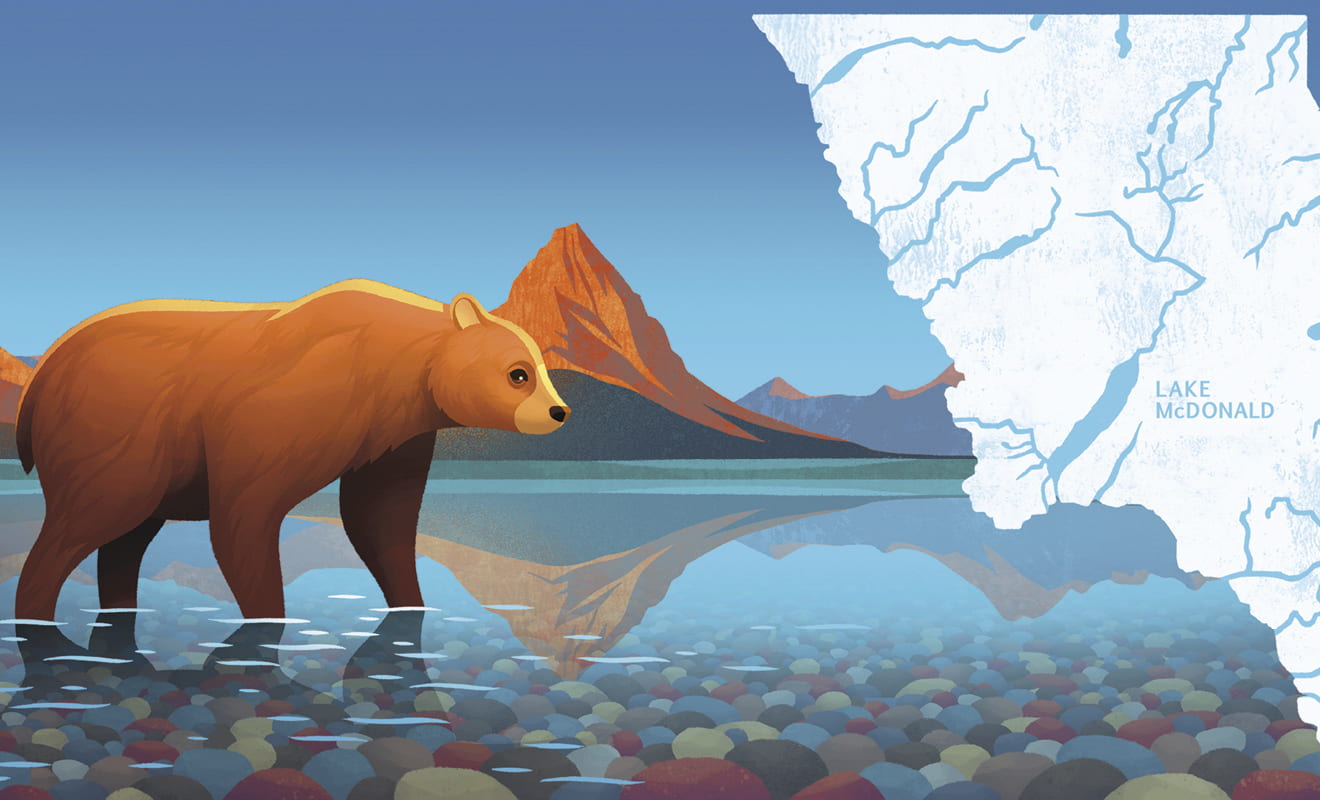Glacier National Park
The Glacier National Park Project Center has a certain rugged, off-the-grid appeal. Located in northern Montana, it’s a place where fast internet speeds aren’t always guaranteed, where impromptu camping trips in Canada are commonplace, and where you might arrive to 86-degree weather only to learn, a few weeks later, that part of the park is closed after being buried under snow.
It’s a place where the unexpected is more or less a daily occurrence, and in the words of project center director and professor of music Frederick Bianchi, “Nothing’s cookie-cutter.” It’s not surprising, then, that since its inception in 2018, the project center has had just one year that can be considered “business as usual.”
This isn’t the first time that WPI and Bianchi have collaborated with the National Park Service. In 2012, he helped found the Bar Harbor, Maine, Project Center in Acadia National Park, which has become a popular summertime destination for students completing their Interactive Qualifying Projects (IQPs). Based on the success of that center, in 2016 he had the idea of expanding into other national parks.
“We’ve all made these kinds of adjustments and sacrifices this year, but the amazing quality of these students, their versatility and resilience, is what I’m most impressed by.”
Having asked the National Park Service to recommend comparable parks that could support the kind of in-depth research students were doing in Acadia, he then scoped out several, including Denali National Park in Alaska and Grand Canyon National Park in Arizona, before settling on Glacier.
In 2018, the first project teams had to split their time between Glacier and Acadia after rampant wildfires tore through Glacier. The following year, things proceeded as planned, with students completing projects on everything from tourism and visitation to invasive species and citizen science.
Spurred on by his dream to visit every one of America’s national parks, Kyle Lang ’21 traveled to Glacier in 2019. Between sunrise hikes, encounters with grizzlies, and mountaintop lunches (with mountain goats, no less), he and his team worked with the Crown of the Continent Research Learning Center on incorporating technology into its Common Loon Citizen Science Project. The work called for computer science—from a team of mechanical, chemical, and environmental engineering majors. They didn’t let that deter them, though, using their combined knowledge to create an effective mapping application for the sponsor.
Turning Obstacles into Opportunities: Read this story by the National Parks Service about WPI’s 2020 Glacier National Park Project Center project teams.
“You’re not always going to be given a task that you can solve completely on your own; it may require knowledge you haven’t obtained yet,” Lang says. “By employing the help of others and really working together, no problem is unsolvable.”
While Bianchi had been looking forward to building on the success of the 2019 projects, 2020 had other plans. In response, he and newly named project advisor Fred Looft, professor emeritus of electrical and computer engineering, worked hard to ensure that while their students’ experiences would undoubtedly be different than expected, they’d still be able to complete meaningful project work; seeing them do exactly that is something Bianchi considers one of his favorite memories as Glacier’s director.
“2018 was the beginning of some incredible student problem-solving and adapting,” he says. “Needless to say … 2020? Same thing. We’ve all made these kinds of adjustments and sacrifices this year, but the amazing quality of these students, their versatility and resilience, is what I’m most impressed by.”
Devon Poisson ’22 was one of the students affected by COVID-19 restrictions. His team worked with members of the park staff to develop a web app to assist hikers with the intensive backpacking planning process. Having delivered a prototype to the park, he adds, “Hopefully, future WPI teams can help facilitate continuous improvement in the backcountry permitting and planning process.”
With 2020 in the rearview mirror, Bianchi hopes to have the opportunity to emulate the experiences of 2019 once it’s safe to do so, something that will not only give students a chance to complete their work in person, but give Glacier officials more of a chance to see just what WPI students can do.
“To us, the students’ work just seems normal because we’re surrounded by it,” he says, “but when other people, outside of WPI, see it, they’re blown away.”



